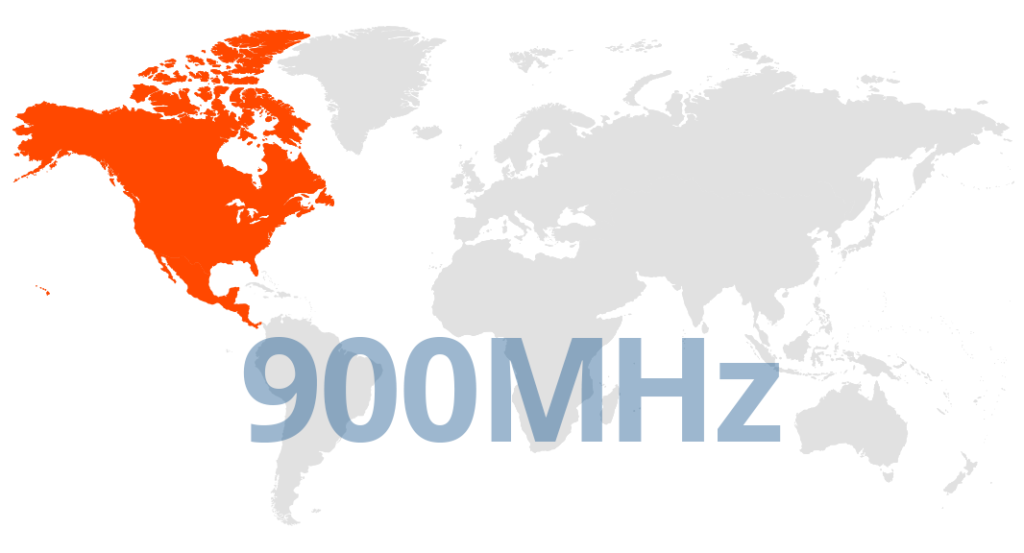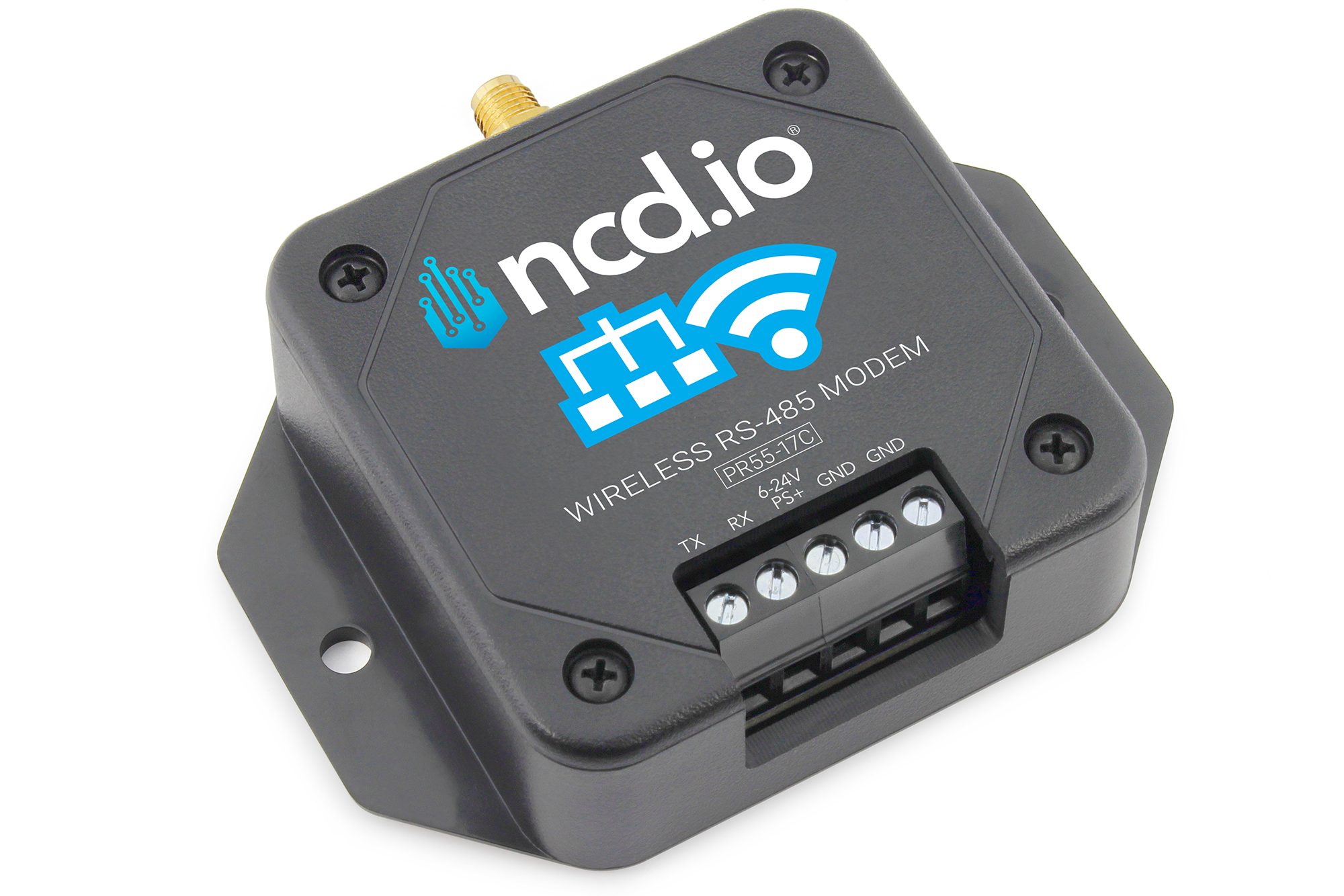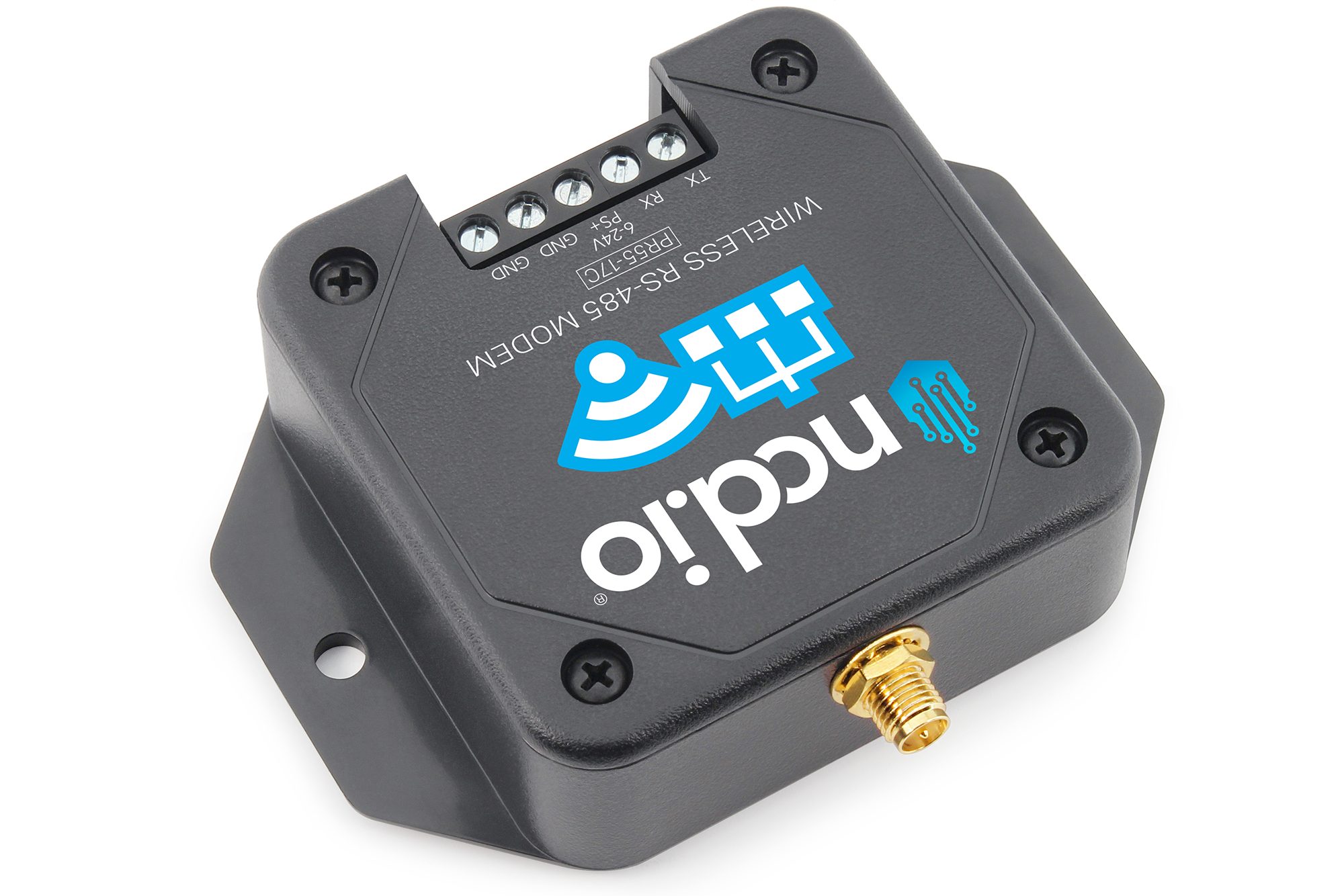Industrial IoT Wireless to RS485 Modem
Highlights
- Industrial Grade IoT Wireless RS485 Modem
- Receive Wireless Sensor Data from NCD Sensors
- Ideal For using ncd.io sensors with PC based RS485
- API communication over Wireless for Robust Reliability
- Converts Wireless Data to Serial RS485 Data As it Is
- Operating Temperature Range -40 to +85 °C
- 5V-32V DC Input Voltage Range
- Works With PC, MAC, Linux and Edge Gateway
- 2 Mile Range with On-Board Antenna
- Wireless Mesh Networking using DigiMesh®
- Available in 3 Versions for use with PLCs and PCs
- This product has been replaced by PR55-34 Link
Long Range Wireless Sensors
Our long range wireless enterprise series sensors are an easy to use and reliable start to any data aggregation application. This video will demonstrate how they work, what they do, and how to use them.
Industrial IoT Wireless to RS485 Modem
Connect to the NCD wireless sensor ecosystem using the industry standard RS485 interface. Our new IoT Wireless RS485 modem makes it easy communicate with NCD wireless sensors over RS485 by simply opening a COM port and watching for incoming data to arrive as sensor data is broadcast. We have stripped away complexity and focused on what you need most, an easy way to get wireless data over a RS485 connection. With a 2-Mile range (line of sight), this device operates at 900MHz for deep penetration through trees, foliage, and even some buildings. With integrated Mesh networking, this device also acts as a repeater for sensor data. Designed to work with any operating system that supports RS485 communications.
This RS485 Wireless modem was designed for indoor use only. Requires a 12VDC Power Supply (optional during checkout).

3 Variations of Wireless to RS485
When ordering this device, you will be prompted to choose a product variation. There are currently 3 different variations available, based on your application requirements. Below is a summary of the command versions available but if you have any questions, please do not hesitate to consult us prior to purchase.
Standard Version
The standard version is ideal when working with computers, as it serves as a raw translator between Wireless and RS-485. This version is generally preferred when working with a raw data on a PC or a computing platform where software development is powerful and flexible. This version offers the greatest possible speed and versatility, but requires more software to target and parse communications data. This version is ideal for working with Node-RED, Visual Studio, Python, or other powerful languages that provide extreme flexibility. The Standard Version is ideal for installations with existing RS485 using computers as a master control for the network.
AutoEncoder Version
The AutoEncoder version simplifies communications with wireless devices by automatically encoding and decoding XBee API packet structures. This means software is easier to write, as you only move payload data into and out of the RS-485 protocol. You do not need to deal with checksum encoding or decoding with this version. Because this is processed using a processor and firmware, it’s a little slower than the Standard version. Specialty commands are available to target multiple wireless devices, configure the network ID, and much more. The AutoEncoder version is a great choice for PLCs where limited programming environments are available. Put simply, if working with the Digi XBee API is intimidating, this version can save you a lot of time. This version is NOT supported by our Node-Red Drivers.
Emulator Version
The Emulator Version of the RS485 modem is ideal for customers who are already using NCD wireless sensors and wish to adapt existing RS485 messages to follow NCD standards for device communications. The Emulator version essentially takes incoming RS-485 data and attaches additional information to make existing equipment act like a modern NCD IoT sensor. The Emulator Version also accepts similarly formatted messages over wireless and sends only the payload to the RS485 network. The Emulator Version is among the easiest of the RS485 Modem versions we currently offer, and is an ideal choice for PLCs with limited resources to communicate effectively with existing RS485 networks as well as existing NCD IoT sensors.
Note: Please contact us if you need help choosing a version for your application.
What Frequency Do I Need?
Range and Frequency of NCD Wireless Sensors
During purchase, you will see three frequency options. Not all options are legal for use in all areas, so it’s important to make the right selection during purchase. We will build your product and accessories based on the options chosen. Here, we will explain these options in much greater detail, but please check your local laws BEFORE purchase.
900MHz for North America (U.S., Canada, and Mexico)
If you are located in North America, the 900MHz Option will provide the longest range currently supported with the best penetration through walls, buildings, industrial equipment, and trees. This option is also the best choice for long range applications.

900MHz Wireless Sensor Range
The official Line of Sight rating for this option is 2 Miles with included antennas or 28 Miles with high-gain antennas. These distances are characterized for direct line of sight applications with no obstructions. Real-world range will vary greatly depending on surrounding buildings, trees, and other objects that may cause reflections or interfere with the transmission. 900MHz has excellent RF penetration characteristics, and we have successfully completed installations in excess of of a half mile on a automotive factory floor with active robots in between. We have also seen excellent penetration in mild radioactive installations making this a possible candidate for use in nuclear energy applications.
We suggest contacting Digi.com for a high-gain antenna recommendation if required. Please check your local laws before choosing this option.
868MHz for Europe Only

If you are located in Europe, the 868MHz Option is the longest range choice available at this time. This option offers better penetration through walls, buildings, trees, and industrial equipment than 2.4GHz. The official line of site rating for this option is 14.5km using 2.1dBi antennas. Please check your local laws before choosing this option.
2.4Ghz for Worldwide Use
The 2.4GHz option should be chosen if 900MHz and 868MHz are not legal for use in your country. This option is now certified for use worldwide, including Europe, United States, Japan, Australia, Brazil, and South Korea. Please check your local laws before choosing this option just in case 2.4GHz is not legal in your area.
Not Sure?
If you are unsure of which sensor option to choose, please contact us. We may be able to help determine which sensors are legal for use in your area.
Node-Red: IoT Without the Code
We’ve built Node-Red libraries so that you can build your entire IoT ecosystem with no coding necessary. We are currently updating our libraries to include this device, full Node-Red Support coming soon.
Mechanical Drawing

This Wireless to RS485 Gateway was designed for indoor use only. Requires a 12VDC Power Supply (optional during checkout).
This device operates at 900MHz and converts raw sensor data into raw RS-485 data. Compatible with Alpha Station https://ncd.io/alpha
Standard Version Packet Example:
Example Incoming Wireless Data — 7E 00 19 90 00 13 A2 00 41 91 1B 83 FF FE C2 7F 00 04 03 FF 80 00 01 00 0F A1 F7 40 9E
Data On RS485 Port — 7E 00 19 90 00 13 A2 00 41 91 1B 83 FF FE C2 7F 00 04 03 FF 80 00 01 00 0F A1 F7 40 9E
AutoEncoder Version Packet Example:
Example Incoming Wireless Data — 7E 00 19 90 00 13 A2 00 41 91 1B 83 FF FE C2 7F 00 04 03 FF 80 00 01 00 0F A1 F7 40 9E
Data On RS485 Port — 7F 00 04 03 FF 80 00 01 00 0F A1 F7 40
Example Incoming Data on RS485 port — 69 20 74 68 69 6E 6B 20 69 20 61 6D 20 77 6F 72 6B 69 6E 67 20 66 69 6E 65
Data on Wireless Link — 7E 00 25 90 00 13 A2 00 41 8C 58 B6 FF FE C2 69 20 74 68 69 6E 6B 20 69 20 61 6D 20 77 6F 72 6B 69 6E 67 20 66 69 6E 65 1F
Emulator Version Packet Example:
Example Incoming Wireless Data — 7E 00 15 10 01 00 00 00 00 00 00 FF FF FF FE 00 00 7F 00 FF FF 85 85 85 E7
Data On RS485 Port — 85 85 85
Example Incoming Data on RS485 port — 69 20 74 68 69 6E 6B 20 69 20 61 6D 20 77 6F 72 6B 69 6E 67 20 66 69 6E 65
Data on Wireless Link — 7E 00 29 90 00 13 A2 00 41 8C 58 B6 FF FE C2 7F 00 FF FF 69 20 74 68 69 6E 6B 20 69 20 61 6D 20 77 6F 72 6B 69 6E 67 20 66 69 6E 65 A2
This RS485 Sensor converter works in a different way. In order to send data to it user will need to include the payload header, node id and sensor type. For example the entire payload was 7F 00 FF FF 85 85 85. Over here
7F – Payload header
00 – Node ID
FF FF — Sensor Type
85,85,85 — RS485 Payload
This device will send data to RS485 port only when the incoming data contains the correct header, node id and sensor type.
900HP-S3B Wireless Compatibility Notes
Notice: Compatibility Notes Does NOT Apply to the Following Products:
- NCD Enterprise Solutions
- NCD Wireless Sensors
- NCD Enterprise Modems and Gateways
Notice: Compatibility Notes Applies to NCD Industrial Products, Including Fusion, ProXR, ProXR Lite, Taralist, and Reactor Series Products.
Compatibility Notes
When using an 900HP-S3B communication module, it is essential that you use the ZIGMO_PCB to configure the module settings. Long-Range wireless sensors may be programmed over the air without removing the communications module.
A 900HP-S3B Modem or a gateway of some kind that support the 900HP-S3B communications module will also be required.
RS-485 Serial Compatibility Notes
The NCD RS-485 Serial communications module is compatible with NCD ProXR, ProXR Lite, Fusion, and Taralist series controllers. This module was designed to work with NCD devices, but may be used with devices outside the NCD family. This device acts as a transparent RS-485 to USART serial converter. Non-NCD products will require a software networking protocol to support multiple devices.



